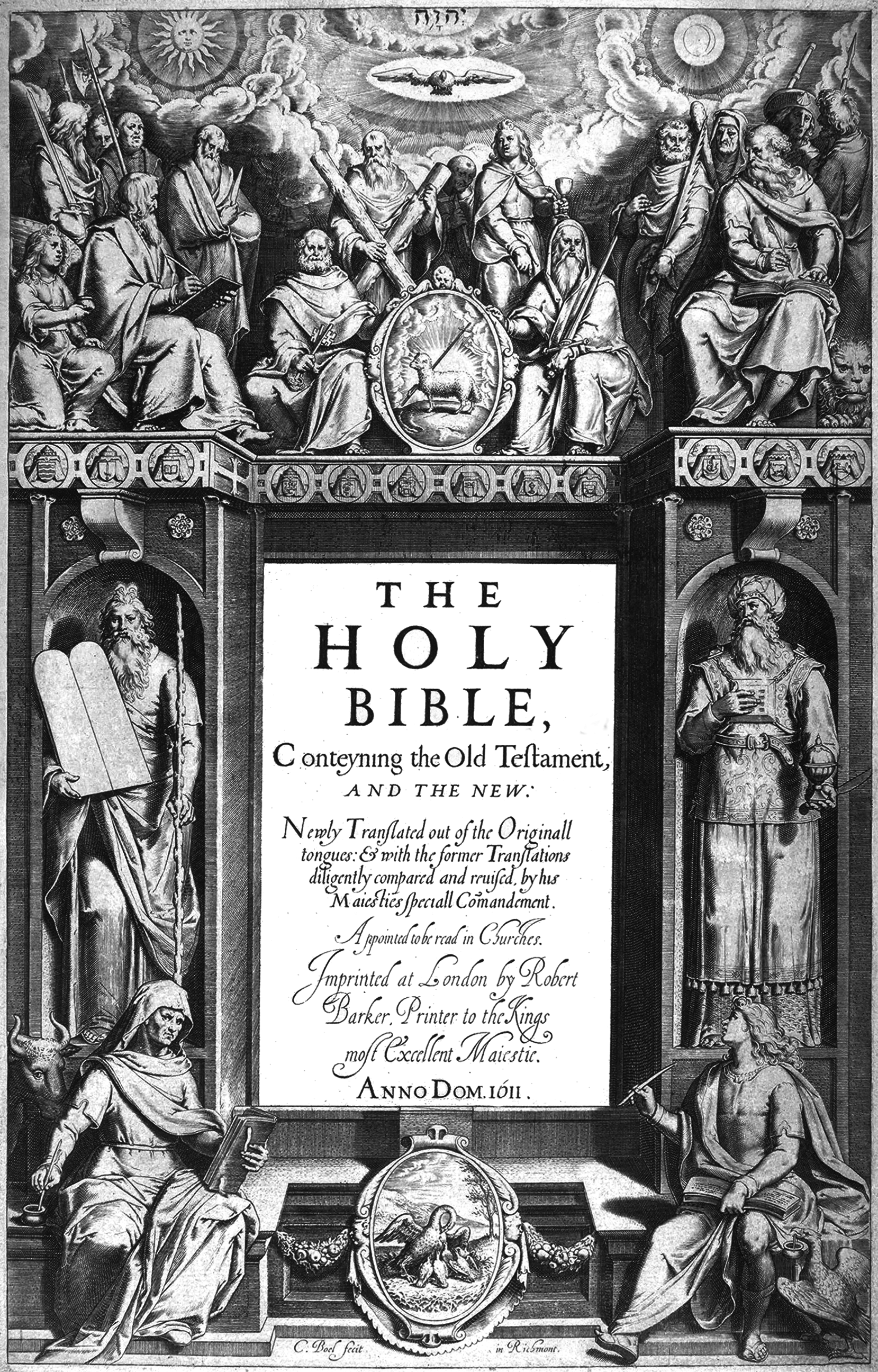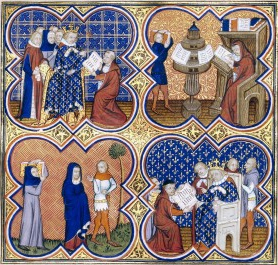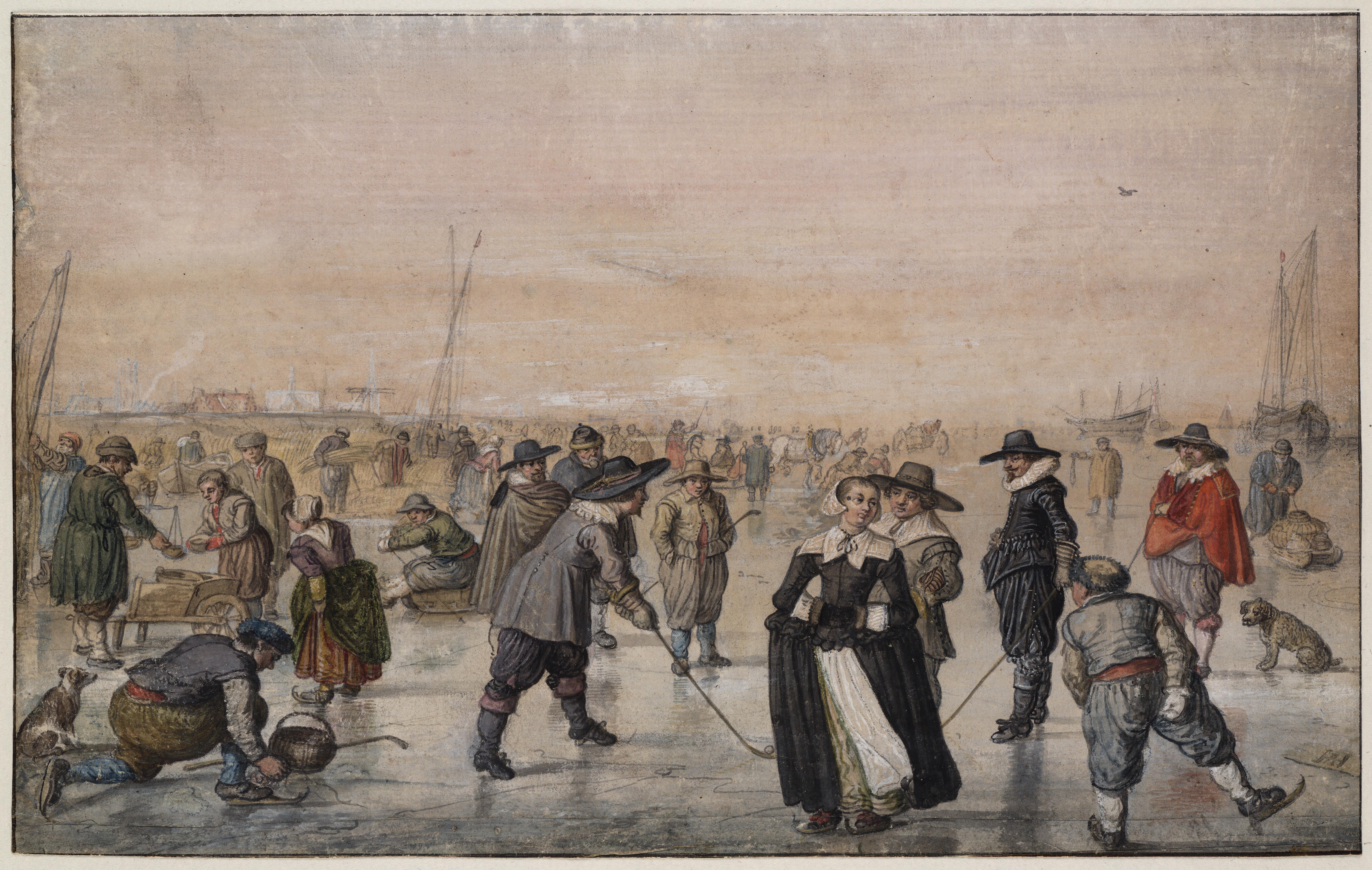|
John Bois
John Bois (sometimes spelled Boys or "Boyse") (5 January 1560 – 14 January 1643) was an English scholar, remembered mainly as one of the members of the translating committee for the Authorized Version of the Bible. Life Bois was born in Nettlestead, Suffolk, England, His father was William Bois, a graduate of Michaelhouse, Cambridge and a Protestant converted by Martin Bucer, who was vicar of Elmsett and West Stow; his mother was Mirable Poolye. His father took great care about his education, and already at the age of five years John could read the Bible in Hebrew. He was sent to school at Hadleigh, then went to St John's College, Cambridge, in 1575 when he was 15 years old. He was taught by Henry Copinger, and soon was proficient in Greek. He intended medicine as a profession, but its study brought on hypochondria. His mentor and Greek teacher at St John's was Andrew Downes. In 1580 Bois was elected Fellow of his college, while suffering from smallpox. On 21 June 1583 he ... [...More Info...] [...Related Items...] OR: [Wikipedia] [Google] [Baidu] |
Authorized Version
The King James Version (KJV), also the King James Bible (KJB) and the Authorized Version, is an English translation of the Christian Bible for the Church of England, which was commissioned in 1604 and published in 1611, by sponsorship of King James VI and I. The 80 books of the King James Version include 39 books of the Old Testament, an intertestamental section containing 14 books of what Protestants consider the Apocrypha, and the 27 books of the New Testament. Noted for its "majesty of style", the King James Version has been described as one of the most important books in English culture and a driving force in the shaping of the English-speaking world. The KJV was first printed by John Norton and Robert Barker, who both held the post of the King's Printer, and was the third translation into English language approved by the English Church authorities: The first had been the Great Bible, commissioned in the reign of King Henry VIII (1535), and the second had been the ... [...More Info...] [...Related Items...] OR: [Wikipedia] [Google] [Baidu] |
Boxworth
Boxworth is a village in South Cambridgeshire, situated about eight miles to the north-west of Cambridge. It falls under the Papworth Everard and Caxton ward and lies within the diocese of Ely. The village covers an area of 1,053 ha. (2,602 a.) Boxworth is a relatively small village, with around 100 houses. History The place-name 'Boxworth' is first attested in the Domesday Book of 1086, where it appears as ''Bochesuuorde''. It appears as ''Bukeswrth'' in 1228 in the Feet of Fines. The name means 'Bucc's enclosure or homestead'. In the 1664 Hearth Tax, a large house belonging to a gentleman, Mr Killingworth, accounted for eight hearths at Boxworth. Boxworth's population, once considerable, shrank severely after the Middle Ages before recovering to reach a peak of c350 in the mid-19th century. In 1870–72, John Marius Wilson's Imperial Gazetteer of England and Wales described Boxworth like this: "BOXWORTH, a parish in the district of St. Ives and county of Cambridge; 3 miles ... [...More Info...] [...Related Items...] OR: [Wikipedia] [Google] [Baidu] |
Translators Of The King James Version
Translation is the communication of the meaning of a source-language text by means of an equivalent target-language text. The English language draws a terminological distinction (which does not exist in every language) between ''translating'' (a written text) and '' interpreting'' (oral or signed communication between users of different languages); under this distinction, translation can begin only after the appearance of writing within a language community. A translator always risks inadvertently introducing source-language words, grammar, or syntax into the target-language rendering. On the other hand, such "spill-overs" have sometimes imported useful source-language calques and loanwords that have enriched target languages. Translators, including early translators of sacred texts, have helped shape the very languages into which they have translated. Because of the laboriousness of the translation process, since the 1940s efforts have been made, with varying degree ... [...More Info...] [...Related Items...] OR: [Wikipedia] [Google] [Baidu] |
17th-century English Anglican Priests
The 17th century lasted from January 1, 1601 ( MDCI), to December 31, 1700 ( MDCC). It falls into the early modern period of Europe and in that continent (whose impact on the world was increasing) was characterized by the Baroque cultural movement, the latter part of the Spanish Golden Age, the Dutch Golden Age, the French '' Grand Siècle'' dominated by Louis XIV, the Scientific Revolution, the world's first public company and megacorporation known as the Dutch East India Company, and according to some historians, the General Crisis. From the mid-17th century, European politics were increasingly dominated by the Kingdom of France of Louis XIV, where royal power was solidified domestically in the civil war of the Fronde. The semi-feudal territorial French nobility was weakened and subjugated to the power of an absolute monarchy through the reinvention of the Palace of Versailles from a hunting lodge to a gilded prison, in which a greatly expanded royal court could be more easi ... [...More Info...] [...Related Items...] OR: [Wikipedia] [Google] [Baidu] |
Men Of Kent And Kentishmen/John Boys, Divine
A man is an adult male human. Prior to adulthood, a male human is referred to as a boy (a male child or adolescent). Like most other male mammals, a man's genome usually inherits an X chromosome from the mother and a Y chromosome from the father. Sex differentiation of the male fetus is governed by the SRY gene on the Y chromosome. During puberty, hormones which stimulate androgen production result in the development of secondary sexual characteristics, thus exhibiting greater differences between the sexes. These include greater muscle mass, the growth of facial hair and a lower body fat composition. Male anatomy is distinguished from female anatomy by the male reproductive system, which includes the penis, testicles, sperm duct, prostate gland and the epididymis, and by secondary sex characteristics, including a narrower pelvis, narrower hips, and smaller breasts without mammary glands. Throughout human history, traditional gender roles have often defined an ... [...More Info...] [...Related Items...] OR: [Wikipedia] [Google] [Baidu] |
Adam Nicolson
Adam Nicolson, (born 12 September 1957) is an English author who has written about history, landscape, great literature and the sea. He is also the 5th Baron Carnock, but does not use the title. He is noted for his books ''Sea Room'' (about the Shiant Isles, a group of uninhabited islands in the Hebrides); ''God's Secretaries: The Making of the King James Bible''; ''The Mighty Dead'' (US title:''Why Homer Matters'') exploring the epic Greek poems; ''The Seabird's Cry'' about the disaster afflicting the world's seabirds; ''The Making of Poetry'' on the Romantic Revolution in England in the 1790s; and ''Life Between the Tides'', a boundary-crossing account of the tides in human and animal life. Biography Adam Nicolson is the son of writer Nigel Nicolson and his wife Philippa Tennyson-d'Eyncourt. He is the grandson of the writers Vita Sackville-West and Sir Harold Nicolson, and great-grandson of Sir Eustace Tennyson d'Eyncourt and Arthur Nicolson, 1st Baron Carnock. He was educ ... [...More Info...] [...Related Items...] OR: [Wikipedia] [Google] [Baidu] |
Latin Vulgate
The Vulgate (; also called (Bible in common tongue), ) is a late-4th-century Latin translation of the Bible. The Vulgate is largely the work of Jerome who, in 382, had been commissioned by Pope Damasus I to revise the Gospels used by the Roman Church. Later, on his own initiative, Jerome extended this work of revision and translation to include most of the books of the Bible. The Vulgate became progressively adopted as the Bible text within the Western Church. Over succeeding centuries, it eventually eclipsed the . By the 13th century it had taken over from the former version the designation (the "version commonly used") or for short. The Vulgate also contains some ''Vetus Latina'' translations which Jerome did not work on. The Vulgate was to become the Catholic Church's officially promulgated Latin version of the Bible as the Sixtine Vulgate (1590), then as the Clementine Vulgate (1592), and then as the '' Nova Vulgata'' (1979). The Vulgate is still cu ... [...More Info...] [...Related Items...] OR: [Wikipedia] [Google] [Baidu] |
King James Version Of The Bible
The King James Version (KJV), also the King James Bible (KJB) and the Authorized Version, is an English translation of the Christian Bible for the Church of England, which was commissioned in 1604 and published in 1611, by sponsorship of King James VI and I. The 80 books of the King James Version include 39 books of the Old Testament, an intertestamental section containing 14 books of what Protestants consider the Apocrypha, and the 27 books of the New Testament. Noted for its "majesty of style", the King James Version has been described as one of the most important books in English culture and a driving force in the shaping of the English-speaking world. The KJV was first printed by John Norton and Robert Barker, who both held the post of the King's Printer, and was the third translation into English language approved by the English Church authorities: The first had been the Great Bible, commissioned in the reign of King Henry VIII (1535), and the second had been the ... [...More Info...] [...Related Items...] OR: [Wikipedia] [Google] [Baidu] |
Apocrypha
Apocrypha are works, usually written, of unknown authorship or of doubtful origin. The word ''apocryphal'' (ἀπόκρυφος) was first applied to writings which were kept secret because they were the vehicles of esoteric knowledge considered too profound or too sacred to be disclosed to anyone other than the initiated. ''Apocrypha'' was later applied to writings that were hidden not because of their divinity but because of their questionable value to the church. In general use, the word ''apocrypha'' has come to mean "false, spurious, bad, or heretical". Biblical apocrypha are a set of texts included in the Septuagint and the Latin Vulgate, but not in the Hebrew Bible. While Catholic tradition considers some of these texts to be deuterocanonical, and the Orthodox Churches consider them all to be canonical, Protestants consider them apocryphal, that is, non-canonical books that are useful for instruction. Luther's Bible placed them in a separate section in between the Old Test ... [...More Info...] [...Related Items...] OR: [Wikipedia] [Google] [Baidu] |
James I Of England
James VI and I (James Charles Stuart; 19 June 1566 – 27 March 1625) was King of Scotland as James VI from 24 July 1567 and King of England and King of Ireland, Ireland as James I from the Union of the Crowns, union of the Scottish and English crowns on 24 March 1603 until his death in 1625. The kingdoms of Kingdom of Scotland, Scotland and Kingdom of England, England were individual sovereign states, with their own parliaments, judiciaries, and laws, though both were ruled by James in personal union. James was the son of Mary, Queen of Scots, and a great-great-grandson of Henry VII of England, Henry VII, King of England and Lord of Ireland, and thus a potential successor to all three thrones. He succeeded to the Scottish throne at the age of thirteen months, after his mother was compelled to abdicate in his favour. Four different regents governed during his minority, which ended officially in 1578, though he did not gain full control of his government until 1583. In 1603, ... [...More Info...] [...Related Items...] OR: [Wikipedia] [Google] [Baidu] |
John Chrysostom
John Chrysostom (; gr, Ἰωάννης ὁ Χρυσόστομος; 14 September 407) was an important Early Church Father who served as archbishop of Constantinople. He is known for his homilies, preaching and public speaking, his denunciation of abuse of authority by both ecclesiastical and political leaders, his ''Divine Liturgy of Saint John Chrysostom'', and his ascetic sensibilities. The epithet (''Chrysostomos'', anglicized as Chrysostom) means "golden-mouthed" in Greek and denotes his celebrated eloquence. Chrysostom was among the most prolific authors in the early Christian Church, although both Origen, Origen of Alexandria and Augustine of Hippo exceeded Chrysostom. He is honoured as a saint in the Oriental Orthodox Church, Oriental Orthodox, Eastern Orthodox Church, Eastern Orthodox, Catholic Church, Catholic, Anglican, and Lutheran churches, as well as in some others. The Eastern Orthodox, together with the Byzantine Rite, Byzantine Eastern Catholic Churches, Cat ... [...More Info...] [...Related Items...] OR: [Wikipedia] [Google] [Baidu] |
Sir Henry Savile
Sir Henry Savile (30 November 154919 February 1622) was an English scholar and mathematician, Warden of Merton College, Oxford, and Provost of Eton. He endowed the Savilian chairs of Astronomy and of Geometry at Oxford University, and was one of the scholars who translated the New Testament from Greek into English. He was a Member of the Parliament of England for Bossiney in Cornwall in 1589, and Dunwich in Suffolk in 1593. Life He was the son of Henry Savile of Over Bradley, Stainland, near Halifax, West Yorkshire, England, a member of an old county family, the Saviles of Methley, and of his wife Elizabeth, daughter of Robert Ramsden. He was educated at Brasenose College, Oxford, where he matriculated in 1561. He then became a Fellow of Merton College in 1565. He established a reputation as a Greek scholar and mathematician by voluntary lectures on Ptolemy's ''Almagest'', and in 1575 became Junior Proctor of the university. In 1578 he travelled on the continent of Europe, ... [...More Info...] [...Related Items...] OR: [Wikipedia] [Google] [Baidu] |




.jpg)
.jpg)




